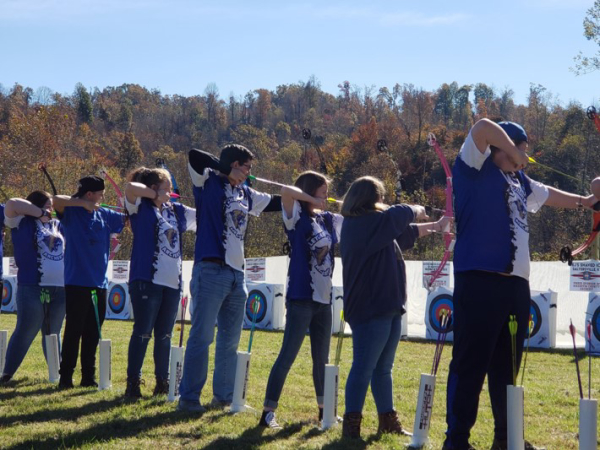By: Lanier Clegg, USFWS

Editor's Note - this story was published by U.S. Fish & Wildlife Service and reprinted with their permission.
Lisa Johnson was thumbing through a state educators’ magazine when an article caught her eye. It detailed a new program – Kentucky Archery in the Schools – that taught students from 4th through 12th grades the basics of archery as part of their physical education curriculum. The class evoked a feeling of nostalgia as she fondly remembered spending countless hours target shooting with borrowed archery equipment during her childhood.
Later, Johnson recalled the article and her childhood pastime while sitting in a staff meeting at Second Street Elementary in Frankfort, Kentucky. The school had received a grant, and staff sought ideas on how to spend the money. Johnson suggested the new archery program.
A shooting sports program in the school? Johnson’s colleagues doubted she’d get the support. Boy were they wrong!
The elementary school’s archery program became a huge success! Students excitedly participated and were eager to attend school. After all, they couldn’t participate if they had been absent that week. Even better, this new archery program proved extremely inclusive, welcoming students of varying abilities. Some of the school’s most successful archers were visually impaired.
Few sports connect people of all ages, genders, races, and abilities like archery. As Johnson pointed out, “Archery doesn’t favor the tall or fast or strong like so many other activities or sports. Archery truly levels the playing field.”
This all-inclusive activity is partially what makes the program so appealing to many schools.
From State Initiative to National Success
In 2001, Kentucky’s Department of Fish and Wildlife tightened its budget as sales of hunting and fishing licenses – a crucial revenue source – declined. They needed a way to encourage more people to get outdoors.
At the same time, the Kentucky Department of Education searched for ways to reduce the rate of school dropouts.
In an unlikely pairing, the two agencies jointly attempted to solve their problems.
Natural resource professionals widely agree that shooting sports help build responsibility, self-reliance, and character, all of which promote success in students’ school performance. The concept for an in-school archery program emerged.
The program aimed to introduce shooting sports to students hoping they would take their newfound skills and seek outdoor adventures. Students could also connect with others with similar interests.
But the schools needed equipment. Mathews Archery, Inc. joined in this effort. Thus, the Kentucky Archery in the Schools Program was born.
It launched in spring 2002 with 21 middle schools. It quickly attracted interest from other schools in and out of state. The program didn’t even reach its first birthday before it had to change its name to National Archery in the Schools Program (NASP).
As the program spread, and more state wildlife agencies joined, the question of funding arose. How would states pay for the education of archery instructors, buy equipment, and cover the costs of starting a team?
That’s where the federal Wildlife Restoration Program came in.
Authorized by the Wildlife Restoration Act of 1937, the program apportions money generated from taxes on firearms, ammunition, and archery equipment to state wildlife agencies to pay for conservation projects. The U.S. Fish and Wildlife Service administers the program and covers 75 percent of the costs with the state responsible for the remaining 25 percent. These projects include habitat and species management, research, land acquisition, facility construction, and hunter education.
The NASP program fits under the umbrella of qualified projects. States began submitting grant proposals to meet their NASP funding needs.
Did the NASP program achieve its goal?
The program has grown far beyond anyone’s expectations. In Kentucky alone, 800 schools enroll in NASP each year bringing in more than 140,000 participants. Nationally, more than 1.3 million students from almost 9,000 schools participate.
If even a fraction of the NASP archers continue with the hobby, they could make an indelible impact on conservation funding. Bows, arrows, and anything that touches a bow (like sights, stabilizers, and more) qualifies for the Wildlife Restoration Act tax. The money can be reinvested into the National Archery in the Schools Program, which can then continue growing and introducing more students to archery.